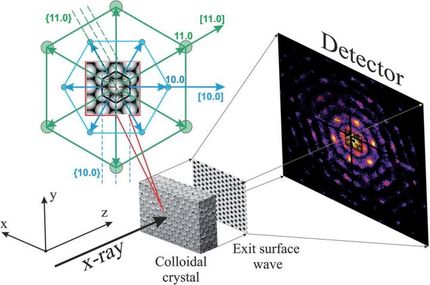First miniature synchrotron now in commercial operation
Lyncean Technologies, Inc. announced the commercial operation of a Compact Light Source (CLS), the world's first miniature synchrotron X-ray source employing state-of-the-art laser and electron beam technology.
The Lyncean CLS was purchased in December 2012 by researchers from the newly formed Center for Advanced Laser Applications in Germany, a joint project of the Ludwig Maximilians University of Munich and the Technical University Munich (TUM).
The CLS device was built and tested in Lyncean's facility in Palo Alto, Calif., and delivered to Munich in December 2014. After installation and a rapid commissioning, the CLS achieved its first X-rays on March 27 and two weeks later the CLS was fully operational.
Prof. Franz Pfeiffer, Chair of Biomedical Physics at TUM, will use the CLS for cutting-edge biomedical research that cannot be accomplished with traditional X-ray imaging devices, in areas such as breast cancer and lung disease. The CLS enables new methods of imaging, including novel phase-contrast techniques to reveal soft tissue details that previously required the X-ray technology of traditional synchrotron facilities - billion dollar machines the size of football stadiums that take many years to build, available only at a small number of national research laboratories around the world.
Traditional synchrotrons have promoted the discovery of new materials and new methods for understanding matter at the atomic level, but for years physicists have attempted to develop a compact commercial X-ray source that would scale the technology for individual academic or industrial laboratories. Lyncean, a spin-off of SLAC National Accelerator Laboratory operated by Stanford University, is the first company to produce such a device. The Compact Light Source is the first and only commercially available miniature synchrotron. While less powerful than the largest synchrotrons, the CLS uses new technology to produce X-rays of similar quality. At one percent of the size and cost of a large synchrotron, the CLS offers researchers the convenience and efficiency of an in-house 'workstation' for X-ray science application.
Most read news
Other news from the department science

Get the chemical industry in your inbox
By submitting this form you agree that LUMITOS AG will send you the newsletter(s) selected above by email. Your data will not be passed on to third parties. Your data will be stored and processed in accordance with our data protection regulations. LUMITOS may contact you by email for the purpose of advertising or market and opinion surveys. You can revoke your consent at any time without giving reasons to LUMITOS AG, Ernst-Augustin-Str. 2, 12489 Berlin, Germany or by e-mail at revoke@lumitos.com with effect for the future. In addition, each email contains a link to unsubscribe from the corresponding newsletter.


























































